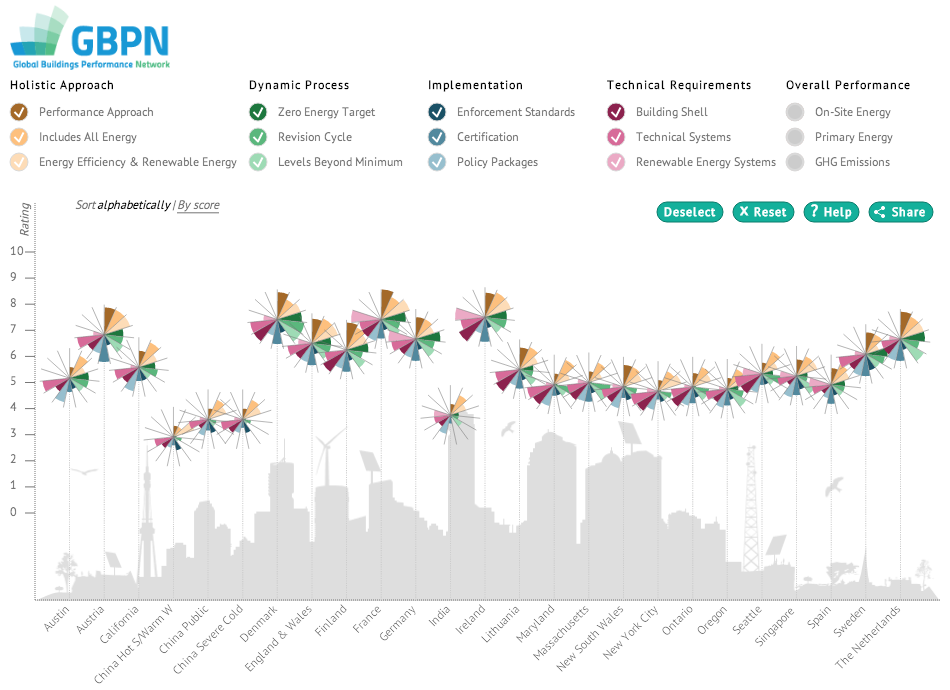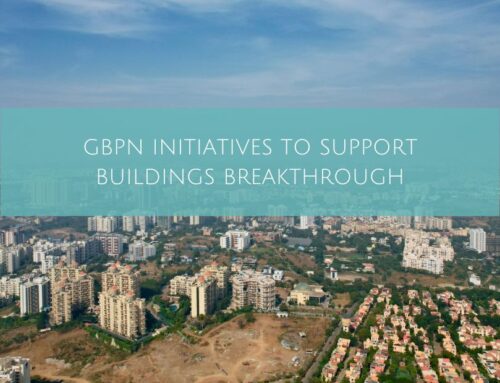The Sad Story About New Buildings: the Real Energy Performance Unknown!
The GBPN launched a new interactive tool on building codes in late February. As part of this tool we assessed how well global best practice building codes perform with regard to achieving zero energy or positive energy in new buildings. A large group of experts were involved in the process of developing the 15 criteria and the results of these criteria as displayed in the tool as “city maps” or “windmills”.

As part of the research we wanted to look at and assess how these code regimes actually performed both in terms of compliance and in terms of actual performance of the new buildings built after the current requirements. We knew it would be difficult to compare such values globally given the different climate zones and we were warned of the difficulties by many of the experts. The main challenge we discovered however lay in finding overall performance values for the new buildings in many of the jurisdiction we included in the tool. This was especially the case for the US and Asia where we struggled to find documentation of the actual energy performance in new buildings built as the requirements are outlined in the codes.
In light of this absence of information, we are now searching for data on the overall performance requirements of the codes in terms of energy end use, primary energy use and on CO2 emission levels. Many of the codes don’t include such values nor do they seem to be documented as a part of the process of legislation or enforcement of these codes. While some of the codes already set the requirements based on overall performance and give a value in kwh per m2 or btu per square foot, many of the other codes do not include such values at all. Although the codes often include assessments of the impact it is not a simple case to find what this actually means in terms of performance and energy use for most of the codes included in the study.
As an expert in the field of energy efficiency in new building I find it astonishing that countries, states and cities do not pay more attention to the actual energy consumption of new buildings. How can we be sure of the value of the codes if we don’t know how well the new buildings are performing under them? So, I guess large savings could be achieved if more attention was paid to the actual energy performance.
For our different studies, we are interested both in the theoretical values and the final consumption in terms of metered consumption in a large sample of new building. These are used to verify how well new buildings actually comply with the new regulation, and how well the theoretical tools calculate this. But in many cases they seem nowhere to be found.
Given the current success with getting such values I find it very important to raise the profile of energy performance of new buildings globally. At the GBPN, we are calling for collaboration on this topic. If you have any information on actual performance values of the building codes we would be very happy to receive your comments on this in our Laboratory dedicated to Positive Energy Buildings. Please prove me wrong!
Are we the only people wanting to know how well new buildings actually perform? Or are there other experts who want to join our mission to show and document the true impact of building codes?
I look forward to discussing this further with you in our Lab!
Related News
- [Report] The GBPN Compares Building Energy Efficiency Policies for New Buildings
- [Tool] Why launch a Knowledge Platform?
Related Report Bundles
Related Laboratory Projects
Share This Story, Choose Your Platform!
Stay in touch with how we’re transforming the buildings sector
GBPN runs innovative building policy reform programs in key regions around the world that aim to tackle the climate emergency by decarbonising the buildings sector. Stay up to date with our newsletter.
Stay in touch with how we’re transforming the buildings sector
GBPN runs innovative building policy reform programs in key regions around the world that aim to tackle the climate emergency by decarbonising the buildings sector. Stay up to date with our newsletter.






